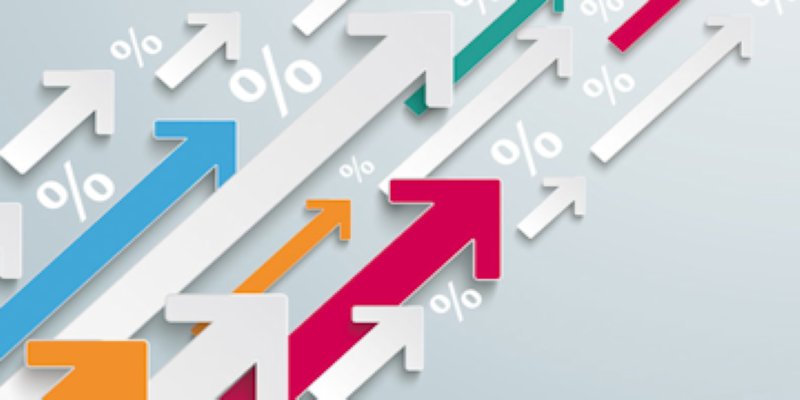Understanding Interest-Rate Derivatives: A Simple Explanation
Advertisement
Have you ever wondered how businesses and financial institutions manage the unpredictable nature of interest rates? For entities operating in markets where interest-rate fluctuations can make or break profitability, stability is paramount. That's why interest-rate derivatives come into play-specialized financial tools that offer protection against such uncertainties. Whether you're an interest-rate aficionado, an inquisitive learner, or someone directly affected by rate changes, understanding these derivatives can turn the mystifying interest-rate hedging world into a readily understandable one. In this article, we will discuss and explore what interest-rate derivatives are and how they work, along with real-life examples to demonstrate their applicability.

What Is an Interest-Rate Derivative?
An interest-rate derivative is essentially a financial contract whose value is based on the underlying variation of interest rates. Such derivatives are nothing but agreements between two parties or more regarding cash flow exchange, often based on a benchmark interest rate such as LIBOR or SOFR. They are quite commonly used in the financial world to help institutions manage exposure to interest-rate volatility.
For instance, a company with a floating-rate loan might be concerned about rising interest rates and the corresponding increase in its borrowing costs. An interest-rate derivative can help the company manage such risk by essentially locking in a predictable rate. These are important instruments in modern finance today. Besides their role in risk management, they provide speculative opportunities.
Types of Interest-Rate Derivatives
Interest-rate derivatives come in various forms, each catering to specific needs and market scenarios. The most common types include interest-rate swaps, futures, and options.
Interest-Rate Swaps: An interest-rate swap is perhaps the most widely used derivative in this category. In its simplest form, it involves two parties agreeing to exchange interest payments. For instance, one party might pay a fixed interest rate while receiving a floating rate from the other party. This allows organizations to transform the nature of their interest obligations—for example, swapping a floating-rate loan for the predictability of a fixed-rate loan.
Interest-Rate Futures: Interest-rate futures are standardized contracts traded on exchanges like the Chicago Mercantile Exchange (CME). These futures enable parties to lock in interest rates at a future date. Businesses use them to hedge against rate changes and secure more stable financial planning.
Interest-Rate Options: Options offer the right, but not the obligation, to trade interest-sensitive assets at a specific rate. For example, a borrower might buy a "cap," which sets an upper limit on the interest rate they’ll pay, effectively creating a safety net in times of rising rates.
Real-Life Applications of Interest-Rate Derivatives
The scope of interest-rate derivatives spans a wide array of industries, serving as a critical financial tool in diverse scenarios. Beyond corporate and banking uses, these derivatives play a pivotal role in sectors such as real estate, government finance, and emerging economies, making them versatile instruments in global financial management.
Real Estate and Construction

The real estate industry heavily relies on borrowed capital, and many projects are financed through floating-rate loans. Rising interest rates can significantly increase borrowing costs, potentially rendering a project unprofitable. To counter this, developers and investors often use interest-rate swaps or caps to manage their interest obligations. For example, a large commercial real estate project financed over a decade might lock in a fixed rate, ensuring cost stability even if market rates surge.
Government and Public Debt Management
Governments often issue bonds to fund infrastructure projects or bridge budget deficits. In doing so, they are exposed to interest rate risks, especially when borrowing in foreign currencies. To mitigate these risks, many governments use derivatives such as swaps to align their debt obligations with more predictable interest rate scenarios. Emerging economies, in particular, utilize these tools to ensure financial stability in the face of volatile global markets. For instance, a country issuing dollar-denominated bonds might use derivatives to hedge against fluctuations in U.S. interest rates.
Global Trade and Multinational Corporations
Multinational corporations engaged in cross-border trade often operate in environments with varying interest rate policies. These companies might use interest-rate derivatives to manage their exposure across multiple regions. For instance, a company operating in both the U.S. and the EU might hedge against differences in Federal Reserve and European Central Bank policies by using swaps or options tailored to each region’s interest rate trends.
Energy and Infrastructure Projects

Large-scale energy and infrastructure projects, often financed through syndicated loans, are particularly vulnerable to interest rate fluctuations. These projects, with timelines spanning decades, use derivatives to lock in favorable rates early on. This ensures predictable financing costs, which is critical for long-term profitability.
Benefits and Drawbacks
Benefits
One of the most significant advantages of interest-rate derivatives is their ability to enhance financial stability. By hedging against interest rate volatility, businesses and governments can ensure predictable cash flows, which is vital for strategic planning. For instance, companies with fixed-rate derivatives can confidently forecast their future expenses, even in turbulent markets.
Another benefit lies in their ability to reduce financing costs. In some cases, businesses can achieve more favorable terms through derivative contracts than they would through direct borrowing. For example, swapping from a high floating rate to a lower fixed rate can save millions over the term of a loan.
Drawbacks
Despite their advantages, interest-rate derivatives are not without risks. Their complexity can lead to misunderstandings and mismanagement, particularly for entities without sufficient expertise. A prime example is the Orange County bankruptcy in 1994, where heavy losses from derivative investments led to financial disaster.
Another drawback is counterparty risk. If one party defaults on the derivative agreement, the other party could face significant financial losses. This risk became evident during the 2008 financial crisis when failing institutions disrupted derivative markets.
Conclusion
In a world where financial stability is often at the mercy of economic shifts, interest-rate derivatives emerge as indispensable tools for managing risk. From protecting businesses against interest rate hikes to enabling speculative ventures, these financial instruments play a pivotal role in the global economy. However, like any powerful tool, they demand careful handling and a deep understanding of their intricacies. By grasping how they work and recognizing their real-world applications, individuals and businesses can make more informed decisions, ensuring financial stability in an unpredictable world.
On this page
What Is an Interest-Rate Derivative? Types of Interest-Rate Derivatives Real-Life Applications of Interest-Rate Derivatives Real Estate and Construction Government and Public Debt Management Global Trade and Multinational Corporations Energy and Infrastructure Projects Benefits and Drawbacks Benefits Drawbacks ConclusionAdvertisement












